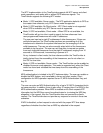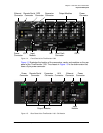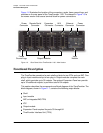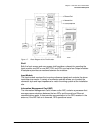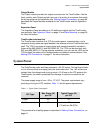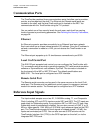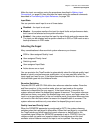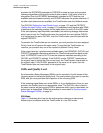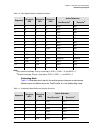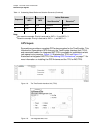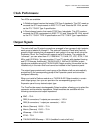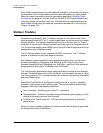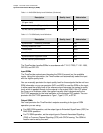
097-58001-02 Revision G – April 2008 TimeProvider User’s Guide 35
Chapter 1 Overview of the TimeProvider
Reference Input Signals
Make the input connections using the procedures described in Making Input
Connections, on page 63, then provision the inputs using the software commands
described in Provisioning the Input Reference, on page 108.
Input State
You can provision each input to one of three states:
Disabled – the input is not used
Monitor – the system monitors the input for signal faults and performance data,
but it cannot be selected as the system reference
Enabled – the system monitors the input for signal faults and performance data.
The input can be selected as the system reference in SSU or SUB mode or as a
backup reference in PRR mode.
Selecting the Input
Many considerations influence which system reference you choose:
SSM or User-assigned Quality Level
User-assigned Priority Level
Switching mode
User-assigned Input State
Active alarms on an input
You can provision the TimeProvider to automatically select the highest-quality input
based on priority and performance qualification, or you can manually select the
input signal you want to use. If that signal becomes disqualified for any reason, the
local oscillator goes into the Holdover mode.
Revertive Switching
Telcordia GR-378 and GR-1244 define two reference selection modes: Revertive
and Non-revertive. In the revertive mode, when an input used as the system
reference is disqualified (for any reason), if that input returns, it reverts to the
system reference when the disqualifying reason is removed. The system reference
switches two times: once when the disqualifying event occurs, and again when the
input is no longer disqualified. In the non-revertive mode, the system reference does
not revert to the initial input when the reason for disqualification is removed. The
system reference switches only once when the disqualifying event occurs.
Quality Level and Priority Level
When the REFMODE parameter is provisioned to AUTO, the system reference
switches when the input signal is disqualified. When the input signal is re-qualified,
the TimeProvider can either keep the current reference or switch back to the
re-qualified signal. When the REFMODE parameter is set to FORCED, then the
reference does not switch and remains locked to that reference and the local
oscillator enters Holdover mode if the input is not re-qualified. You may also



